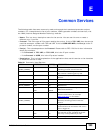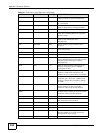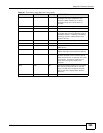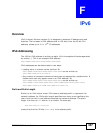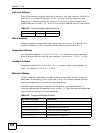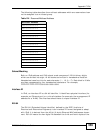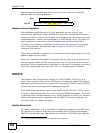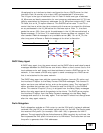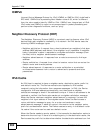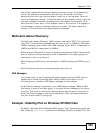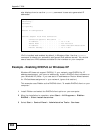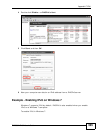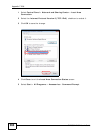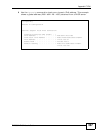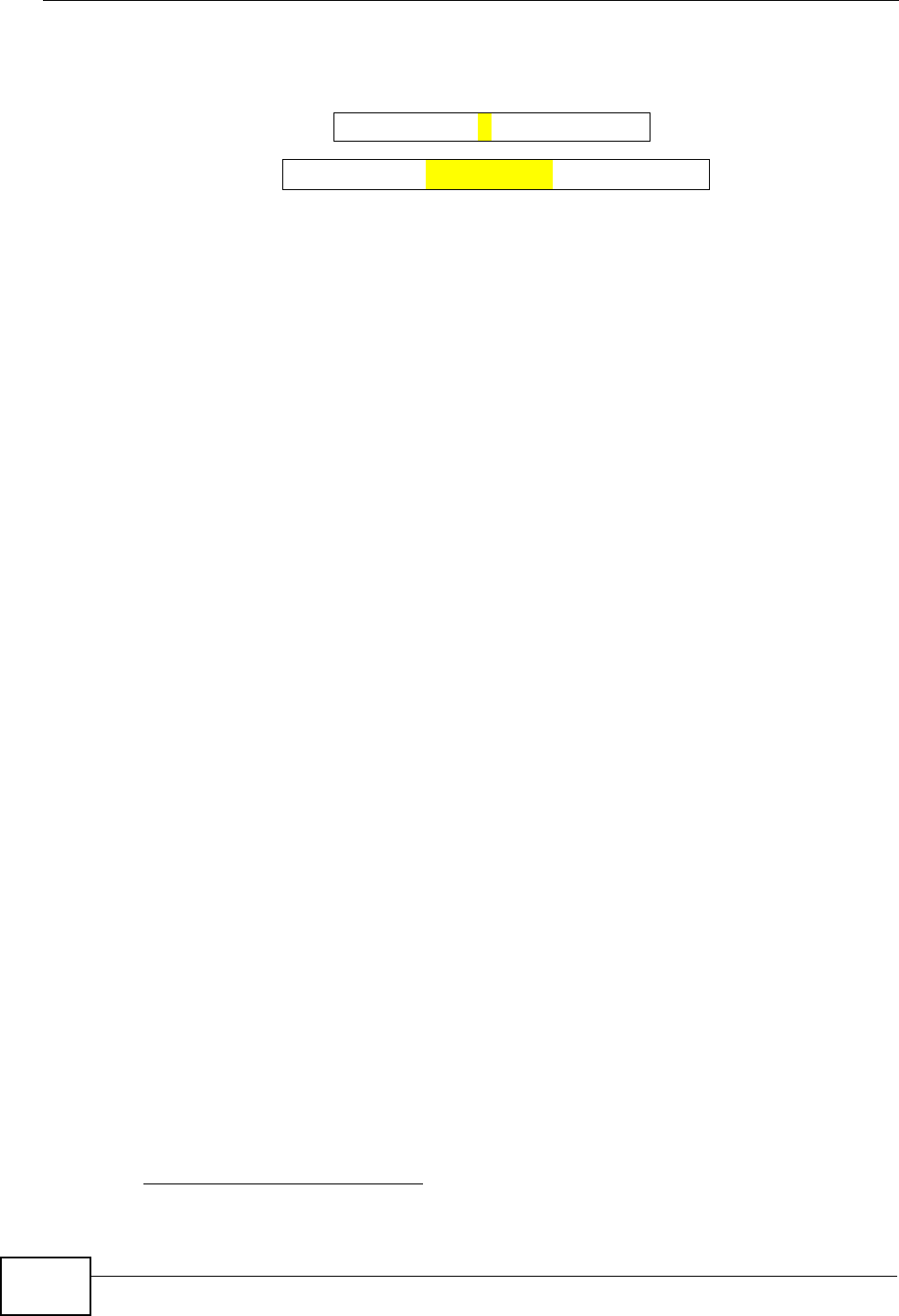
Appendix F IPv6
EMG5324-D10A User’s Guide
360
MAC address and complements the seventh bit of the first byte of the MAC
address. See the following example.
Stateless Autoconfiguration
With stateless autoconfiguration in IPv6, addresses can be uniquely and
automatically generated. Unlike DHCPv6 (Dynamic Host Configuration Protocol
version six) which is used in IPv6 stateful autoconfiguration, the owner and status
of addresses don’t need to be maintained by a DHCP server. Every IPv6 device is
able to generate its own and unique IP address automatically when IPv6 is
initiated on its interface. It combines the prefix and the interface ID (generated
from its own Ethernet MAC address, see Interface ID and EUI-64) to form a
complete IPv6 address.
When IPv6 is enabled on a device, its interface automatically generates a link-local
address (beginning with fe80).
When the interface is connected to a network with a router and the Device is set
to automatically obtain an IPv6 network prefix from the router for the interface, it
generates
5
another address which combines its interface ID and global and subnet
information advertised from the router. This is a routable global IP address.
DHCPv6
The Dynamic Host Configuration Protocol for IPv6 (DHCPv6, RFC 3315) is a
server-client protocol that allows a DHCP server to assign and pass IPv6 network
addresses, prefixes and other configuration information to DHCP clients. DHCPv6
servers and clients exchange DHCP messages using UDP.
Each DHCP client and server has a unique DHCP Unique IDentifier (DUID), which
is used for identification when they are exchanging DHCPv6 messages. The DUID
is generated from the MAC address, time, vendor assigned ID and/or the vendor's
private enterprise number registered with the IANA. It should not change over
time even after you reboot the device.
Identity Association
An Identity Association (IA) is a collection of addresses assigned to a DHCP client,
through which the server and client can manage a set of related IP addresses.
Each IA must be associated with exactly one interface. The DHCP client uses the
MAC 00 : 13 : 49 :12 : 34 :56
EUI-64 02 :13 :49
: FF : FE :12 : 34 :56
5. In IPv6, all network interfaces can be associated with several addresses.




